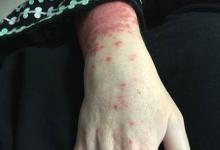Psoriatic Arthritis: Which biologic agent is the best first choice? Save

A growing arsenal of therapeutic targets in psoriatic arthritis (PsA) has enhanced the landscape of treatment in patients with this disease.
While it’s never bad to have more options, this does pose a question for rheumatologists regarding which agents should be trialed first. In the absence of clear efficacy of one agent over another, much of this decision is based on individualized patient factors: psoriatic domains involved, co-morbidities, insurance coverage and preference, route of administration.
Can clinical trials of therapeutic agents help inform this decision making process?
Chirumamilla et al. sought to examine this question by performing a meta-analysis of randomized control trials (RCTs) comparing IL-17 inhibitors (IL-17i) versus adalimumab (ADA) in biologically-naïve PsA patients (Abstract 2370). In total, 3 RCTs comprising 1990 patients were included for analysis. ACR50 joint response was comparable between IL-17i and ADA treated patients with a risk ratio 1.06 (0.97-1.16). Skin response, as measured by both PASI75 and PASI100, favored patients treated with IL17i compared to ADA with a risk ratio 1.49 (1.26-1.78, p<0.01) and 1.84 (1.12-3.02, p<0.0001) respectfully. When a primary composite of both joint and skin metrics was used, combining ACR50 + PASI100, patients receiving IL-17i agents performed better compared to ADA (risk ratio 1.49, p<0.01). While rates of serious events were not statistically different between treatment agents, IL17i patients experienced significantly decreased rates of drug discontinuation due to adverse effects compared to ADA patients with a risk ratio of 0.56 (0.38-0.82, p<0.01).
These results are suggestive that when considering adalimumab compared to IL17i agents as a first-line biologic agent in PsA, the latter may be more strongly weighed when the patient has prominent skin disease and may be more well tolerated. Meaningful conclusions must be made with caution, given the retrospective nature of these findings, but are certainly interesting as we continue to navigate the therapeutic landscape in PsA.









If you are a health practitioner, you may Login/Register to comment.
Due to the nature of these comment forums, only health practitioners are allowed to comment at this time.